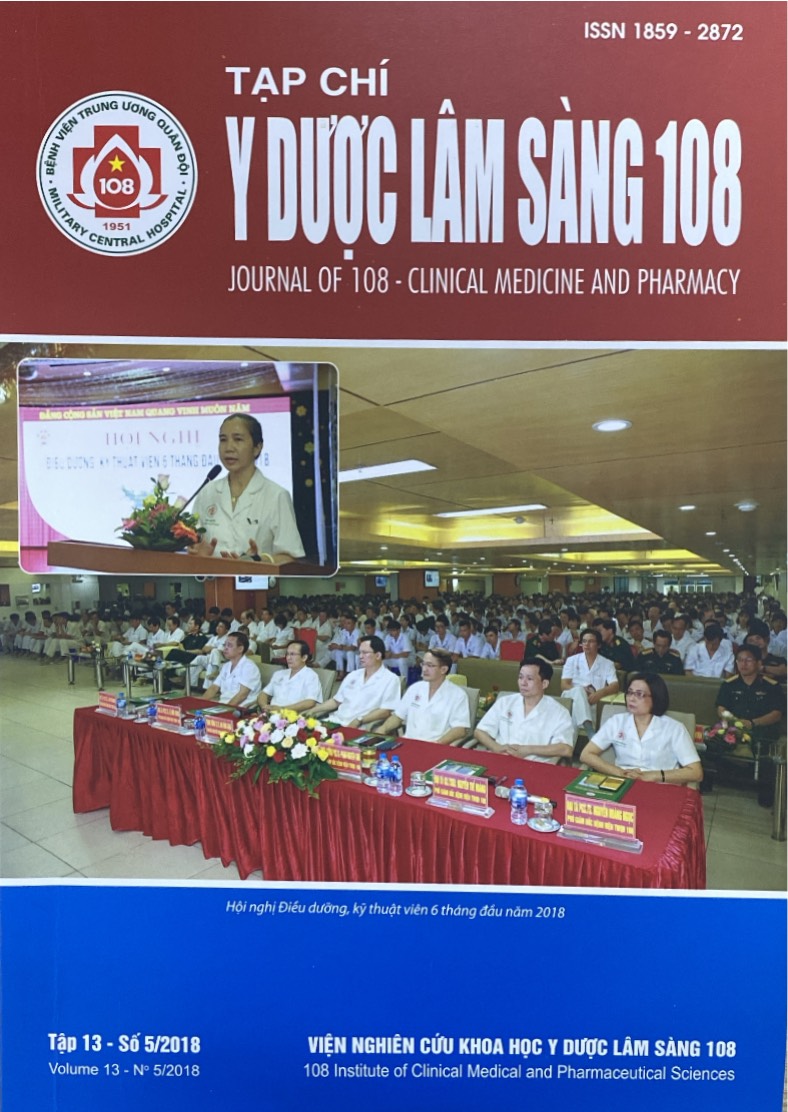Explain the value of endoscpic ultrasonography in the diagnosic of biliary obstruction
Main Article Content
Abstract
Objective: Explain the value of endoscpic ultrasonography (EUS) in the diagnosic of biliary obstruction. Subject and method: 62 patients with bile duct stones were treated at the Gastroenterrology department of the 108 Military Central Hospital from January 2017 to April 2018. Evaluate the value of EUS by comparision with the gold standard ERCP. Result: Male 56.4%, female 43.6%, M/F = 1.3; the clinical mainly a Charcot: Right lower rib pain 72.6%, fever 48.3%, jaundice 45.1%. EUS correct bile duct stone were 88.9%. EUS and ERCP have hight similarity in the diagnosis of bile duct stones with K = 0.721. In the diagnosis of bile duct stones the EUS had a sensitivity of 88.9%, specificity is 87.5%, correct diagnosis value is 88.7%. Conclusion: EUS is very valuable in the diagnosis of biliary obstruction.
Article Details
References
2. Gress FG, Savides TJ, Bounds BC et al (2012) Atlas of endoscopic ultrasonography. Wiley-Blackwell.
3. Lédinghen V, Lecesne R, Raymond JM et al (1999) Diagnosis of choledocholithiasis: EUS or magnetic resonance cholangiography? A prospective controlled study. Gastrointestinal Endoscopy 49(1): 26-31.
4. Saifuku Y, Yamagata M, Koike T et al (2010) Endoscopic ultrasonography can diagnose distal biliary strictures without a mass on computed tomography. World J Gastroenterol 16(2): 237-244.
5. Cano LD (2007) Suspected choledocholithiasis: endoscopic ultrasound or magnetic resonance cholangio-pancreatography? A systematic review. European Journal of Gastroenterology & Hepatology 19(11): 1007-1011.
6. Verma D, Kapadia A, Eisen GM et al (2006) EUS vs MRCP for detection of choledocholithiasis. Gastrointestinal endoscopy 64(2): 248-254.
7. Rana SS, Bhasin DK, Sharma V et al (2013) Role of endoscopic ultrasound in evaluation of unexplained common bile duct dilatation on magnetic resonance cholangiopancreatogaphy. Ann Gastroenterol 26(1): 66-70.
8. Fusaroli P, Kypraios D, Caletti G et al (2012) Pancreatico-biliary endoscopic ultrasound: A systematic review of the levels of evidence, performance and outcomes. World J Gastroenterol 18(32): 4243-4256.
9. Polkowski M, Regula J, Tilszer A et al (2007) Endoscopic ultrasound versus endoscopic retrograde cholangiography for patients with intermediate probability of bile duct stones: A randomized trial comparing two management strategies. Endoscopy 39(4): 296-303.
 ISSN: 1859 - 2872
ISSN: 1859 - 2872
